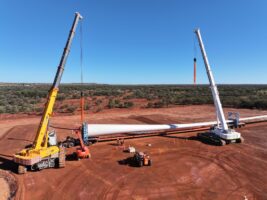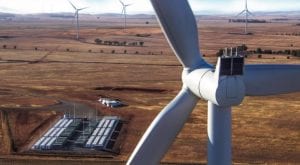Solar farms in north-west Victoria and south-west New South Wales are facing “large and unpredictable swings in revenues” over the coming financial year, an investor group has warned, with a forecast of changing network constraints promising to deliver painful cuts to some generator grid ratings.
The Australian Energy Market Operator published its preliminary calculations for 2024-25 grid ratings – called Marginal Loss Factors (MLFs) – on Thursday; a little earlier than usual, AEMO says, to allow plenty of time to engage with generators and customers and receive feedback.
Judging by early feedback, this looks like a wise move. In a statement released on Thursday, the Clean Energy Investor Group says the preliminary calculations suggest some generators’ MLFs could decrease by up to 10% compared to last year.
“Whilst some generators may have benefited from recent congestion relief works conducted by Transgrid in south-west NSW, the unpredictability of MLFs continues to make it difficult to reliably predict future revenues,” the CEIG says.
In particular, the investor group warns solar projects in certain parts of NSW and Victoria are in the firing line for “unpredictable swings” in revenues, “as old issues around MLFs come back to haunt the industry.”
Marginal loss factors – which decide how much of a generator’s output is credited as “delivered” to a customer – have indeed become a major issue for solar and wind developers, with often unpredictable changes to ratings potentially leading to ongoing financial losses.
As RenewEconomy has reported, MLFs are influenced by a range of factors, including the number of generators in a specific region, the number of customers and the amount of load in that area, and the availability of transmission to take it elsewhere if needed.
An MLF of 1.0 means all of the output is credited, but an MLF of 0.8 means only 80 per cent is credited. Some wind and solar farms have been surprised by low ratings, the result of insufficient transmission or the fact that too many facilities have been built in one region.
According the AEMO’s preliminary calculations for NSW generators, the Broken Hill solar farm in the state’s far west is set to have its MLF cut from 0.8324 to 0.7467. Finley solar farm, on the NSW Victoria border, faces a cut from 0.9255 to to 0.8738.
The Limondale solar farms 1 & 2 also face cuts, from 0.8255 and 0.8310 to 0.7524 and 0.7585, respectively. The Sunraysia solar farm, too, faces a cut from 0.8255 to 0.7524.
“The preliminary MLFs will deliver a blow to solar farms who had finally been able to increase their output after Transgrid made some fixes to the transmission network in south-west NSW,” says CEIG policy director Marilyne Crestias.
“Because of the way they are calculated, MLFs can change materially year on year. MLFs have a direct impact on the revenue received by generators, and this volatility and lack of predictability create risk for investors.”
In Victoria, some of the projects facing cuts include the Bannerton solar farm (from 0.8947 to 0.8349) the Gannawarra solar farm (from 0.9413 to 0.8965) and the Kiamal solar farm (from 0.8755 to 0.8144).
“This is not just an issue for generators and investors – lack of revenue predictability adds risk, which ultimately impacts the price and make-up of the electricity used by consumers,” Crestias adds.
“CEIG previously raised issues around the volatility of MLFs. As a long-time advocate for reform in this area, we look forward to working with AEMO and industry to find ways to resolve this important issue.”
For its part, AEMO says electricity lost as it travels through the transmission network from generators to customers needs to be valued and factored into electricity prices paid to generators and recovered from customers.
But in a statement emailed to RenewEconomy on Thursday, the market operator said it also understands the commercial impact these factors can have on projects.
AEMO also says it is “looking at possible options to reduce large year on year changes within the framework of the national electricity rules.
“Following the finalisation of the 2024/25 calculations AEMO will consult with industry on the methodology moving forward,” the statement said.










